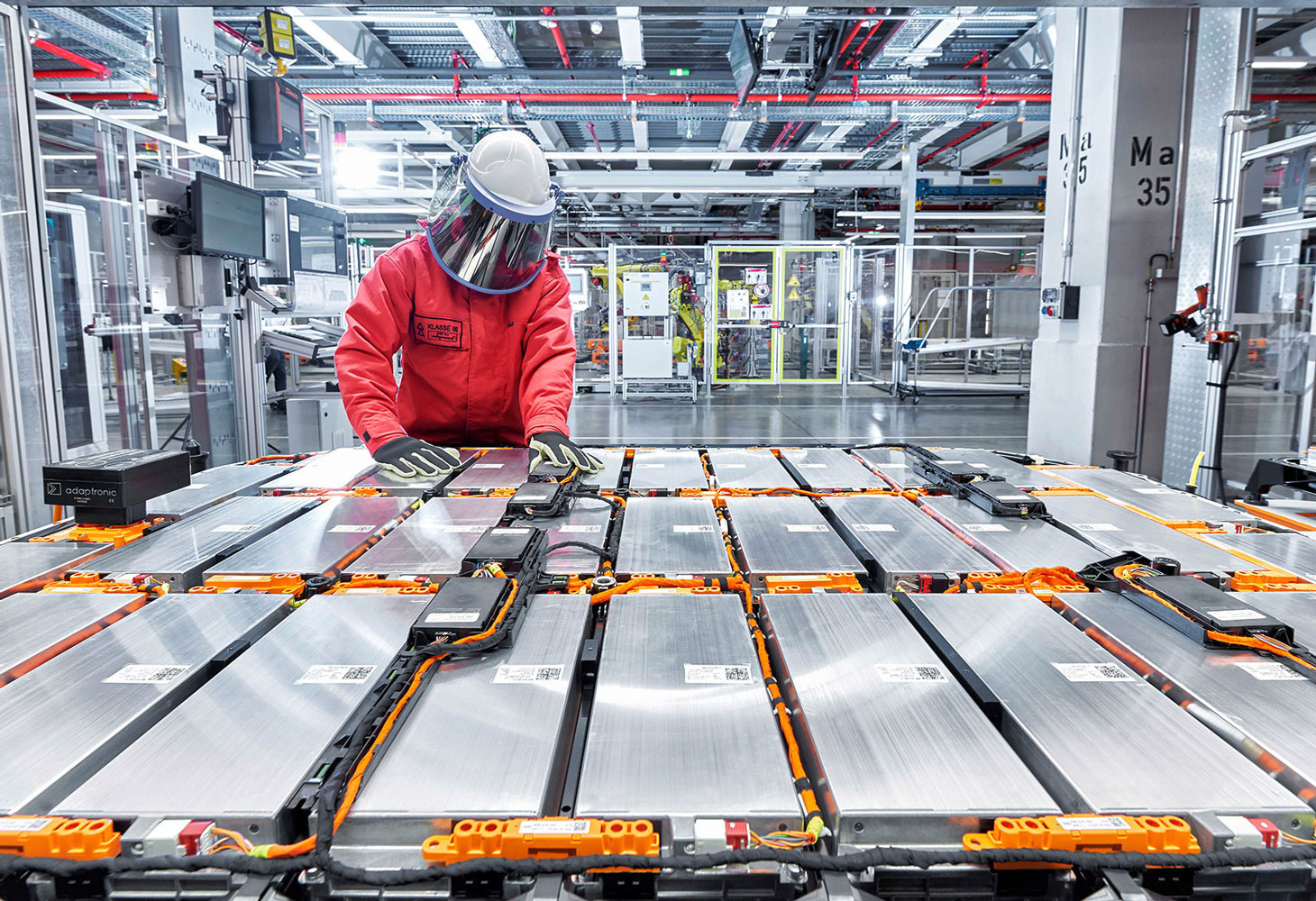
Electric vehicle fluids: Off-the-shelf or brand new additive chemistries?
A vast array of powertrain architectures exist for hybrid and battery electric vehicles (BEV). When the development of the next generation of vehicles was in its infancy, original equipment manufacturers (OEMs) tended to rely on lubricants they already had on hand. In general, lubricants are good insulators, says Jack Zakarian, owner and principal consultant of JAZTech Consulting, who has 37 years’ experience developing lubricant formulations for driveline products at U.S.-based energy major Chevron Corp. “With careful formula design we can control electrical properties even better,” he told members of the Asian Lubricant Manufacturers Union (ALMU) during a webinar on 21 July 2020 entitled “When will electric vehicles take charge: Potential impact on lubricant formulations and sales channels.”

At this point, most lubricant manufacturers are still feeling their way, says Zakarian. There are no industry standards to speak of and OEMs are not typically publishing specifications “beyond their circle.” Zakarian, a member of the SAE technical committee tasked with drafting an industry specification for electric vehicle (EV) fluids, says the guidance is in its early stages. The committee is examining available test methods, OEM needs, and a range of values. The committee hopes to have a document available by next year, he says.
While EVs comprise only a fraction of the global car parc today, they are one of the fastest-growing segments in the automotive industry due to government policy and consumer demand. Major global car manufacturers have announced plans to release around 200 new EV models in the next five years. George Zhang, senior director and general manager at Valvoline China, suggests EV sales could reach more than half of global passenger car sales by 2040. Adam Banks, e-mobility marketing manager at Afton Chemical, believes infrastructure and battery costs will restrain demand until the mid-2020s, before accelerating in lead markets such as China and Europe. Decisions on which fluids will be used in first-fill or factory-fill are being made now, he says.

Nevertheless, uncertainty remains over when EVs will become the dominant automotive technology. Zakarian believes hybrid vehicles have a better chance of gaining market share in the immediate term due to their extended driving range. Zhang contends that the BEV market could be growing at a much faster rate in certain countries or regions, a trend that will continue in the foreseeable future.
Right now, engine oil consumption is relatively unaffected by EVs. Both the factory fill and the service fill market for EVs is small. If it were not for the current pandemic, we would be witnessing growth in lubricating oil sales, says Zakarian. Still, market research company Kline predicts total passenger car motor oil demand will drop by 1.2 million metrictons by 2040. Irrespective of your view on the future growth rate of EV technology, it is prudent to have plans to market hybrid and full electric fluids.
Zakarian believes additive companies will use proven additive technology in the development of EV Fluids. Companies will not necessarily develop new chemistries, rather picking and choosing additives with good thermal and electrical properties from existing portfolios. In general, current materials are suitable for electrics, the real difference is in how they rearrange those materials, he says.
Despite a proliferation of announcements on EV fluids, many organisations are not publishing data on new products. F+L Magazine spoke to several manufacturers to gain insight into their approach and the critical fluid properties for electric and hybrid vehicles.
 The sector is focussed on additive innovation and technology developments that will improve the thermal and electrical properties of fluids, says Selda Gunsel, vice president global commercial technology at Shell. New additive chemistries are required to realise the full potential, she says. Bespoke fluids that meet the specific needs of different drivetrain technologies are important, whether it is for hybrid or BEV, with additive requirements dependent on unique EV hardware set-ups and the requirements of individual customers.
The sector is focussed on additive innovation and technology developments that will improve the thermal and electrical properties of fluids, says Selda Gunsel, vice president global commercial technology at Shell. New additive chemistries are required to realise the full potential, she says. Bespoke fluids that meet the specific needs of different drivetrain technologies are important, whether it is for hybrid or BEV, with additive requirements dependent on unique EV hardware set-ups and the requirements of individual customers.
EV fluid design at Valvoline sometimes relies on off-the-shelf hardware components and lubricants, says Zhang. Though, catering to specific hardware designs often requires advanced lubricants based on brand new additive chemistries. The biggest challenge is the wide variety of BEV and hybrid powertrain architectures, which require unique lubricant performance, says Zhang, who has more than 20 years’ experience in research and development at Valvoline.
While there are examples of existing fluids being used by OEMs, Banks believes this is merely an interim solution. As the degree of electrification continues, designs will be refined, and the need for new fluid types with a different balance of properties will be finalised, he says. New categories of additives will also emerge. Electric transmission fluid (ETF) for direct-cooled eAxles is an example of a completely new product type, says Banks.

Establishing a close partnership with OEMs is imperative to fully understand their fluid requirements. Even when the EV fluid market becomes more substantial, most of the action will be at the factory, not the aftermarket. The opportunity for service fill is limited, says Zakarian.
Distinctive characteristics in EV powertrains are shifting the performance needs of lubricants. Manufacturers must offer familiar prevention of wear and protection that is commonplace in internal combustion engines whilst managing compatibility with high voltage components present in electric and hybrid vehicles. Fluid solution providers need to consider electrical properties, thermal properties, material compatibility, durability, and efficiency, says Zhang.
One of the curiosities of EV powertrains is their distinctive way of delivering power. EVs provide full torque from the start and maintain it over a wide range of speeds. A high torque and low-speed combination places additional stress on drivetrain components such as gears and bearings, says Zhang. EV Fluids are expected to offer enhanced wear protection. At the other end of the spectrum, the top speed of an electric motor can approach 20,000 rpm or higher, leading to increased churning loss. A lubricant with lower viscosity is desirable, says Zhang.
Protection of vulnerable metals and coatings from corrosion is of great importance in EV lubricant design. Balancing strong gear protection while preventing copper corrosion is among the tougher technical challenges faced by the industry, says Banks. Some of the additive chemistries, such as anti-wear, can be corrosive to copper. New test methods are required, including vapour phase corrosion tests and extended corrosion tests, he says. In these extended corrosion tests, the failure mode is also important. While a visual rating is helpful, as in ASTM D130, the amount of copper dissolved into the oil is critical to measure, suggests the Afton Chemical representative. Several lubricant manufacturers have built an in-house copper corrosion test capability to simulate copper wire corrosion under electrical current.

Direct cooling of the electric motor by a fluid sharing a sump with other functions, such as final drive gears, poses further challenges. The e-motor can run extremely hot, has many new materials, and is electrified. Across BEVs and hybrids, even those fluids not directly contacting an e-motor are impacted because the mechanical parts have a different duty cycle, says Banks. In the case of engine oil, the demands on a hybrid engine are quite different from a pure internal combustion engine because of how the engine is used. There have been reports of increased emulsion, wear, and fuel dilution, he says.
Lubricant heat transfer capability is heavily dependent on its physical properties such as viscosity. Low viscosity is the key to heat removal and can be aided by higher quality base stocks that offer better thermal conductivity, says Banks. Though, if the viscosity is too low, wear and fatigue problems can arise.
Viscosity is determined by both base oil and additives, such as viscosity modifiers, while electrical conductivity primarily depends on additive properties, says Zhang. Careful selection of base oils and additives, and intelligent formulation design, are best practice to balance the trade-off between electric conductivity and viscosity, he says.
Most e-fluids will use base oils that have better heat removal ability. My feeling is it will be Group IV, PAO or some other type of synthetic, says Zakarian. Shell uses gas-to-liquids (GTL) for its e-fluids range which already has a lower viscosity, but benefits from lower electric conductivity to maximise heat removal, says Gunsel.
New segments are arising, such as direct battery coolants. This is where a dielectric fluid is used within the battery to reduce temperature gradients and enable faster charging and improved battery life. In applications where cooling is critical and can offset OEM costs for battery capacity or expensive rare metals in e-motors, higher performance base stocks will find opportunities, says Banks, but will always have to be weighed against cost.
Esters are gaining increasing attention due to their impressive heat removal ability and because they can be tailored to conduct more or less charge. We will definitely see esters as part of the lubricant, says Zakarian, although he advised ALMU members that they are unlikely to be the main base fluid. Polyglycol fluids will also play a role, but it will not be the main fluid either, he says.
Electrical properties of lubricants are a critical issue in the durability and performance of EVs, in particular, conductivity and dielectric breakdown. With no global industry standards, there are two factors at play, an OEM’s requirements based on their hardware, and there can be regulatory factors; for example, in China, there are safety requirements that need to be met legally for EVs, says Zhang.

Heat removal is largely determined by the choice of base stocks, whereas electrical conductivity is heavily influenced by additive chemistry. Conductivity should not be too high, or it may short circuit the motor. Too low and it does not allow ionic movement and can build up static charge, says Zakarian.
Through expertise in additive formulation, we can reduce electrical conductivity significantly while retaining performance. This creates the opportunity of low viscosity without high electrical conductivity, says Banks. At that point, the barriers to low viscosity are dictated by other considerations such as flash and fire point, overall system efficiency, and evaporation loss.
Dielectric breakdown tests measure the amounts of stress oil can withstand before failure — noted by electrical sparking through the oil. In used fluid, contaminants such as moisture, particles and wear metals, may change the electric properties of a fluid significantly. Therefore, formulators need to incorporate that aspect into lubricant product design. At this time dielectric breakdown does not appear to be a major concern — but it should be monitored, says Zakarian.
An emerging trend is the development of a unified EV fluid that acts as both a lubricant and heat management fluid for the battery, electric motor, electronics and drive system, says Zhang. Novel base fluids and new additive chemistries will likely need to be developed/incorporated. The Valvoline representative also highlighted a trend to a much higher requirement on electric properties of EV fluids, as systems with high voltage such as 800 volts or even 1300 volts are being worked on.
Afton Chemical emphasised three key technology trends that will increase the volume and value of lubricants in the next generation of electric vehicles. The first generations of EVs are predominantly dry (air-cooled, or via a coolant jacket), but subsequent generations are moving to direct oil cooling of e-motors. A trend to multispeed EVs will enhance a vehicle’s efficiency and performance. A shifting element, such as a clutch pack or synchronisers, will be enabled by an appropriate fluid. Finally, Banks highlighted the emergence of direct battery cooling, and he foresees mainstream adoption from the late 2020s.








